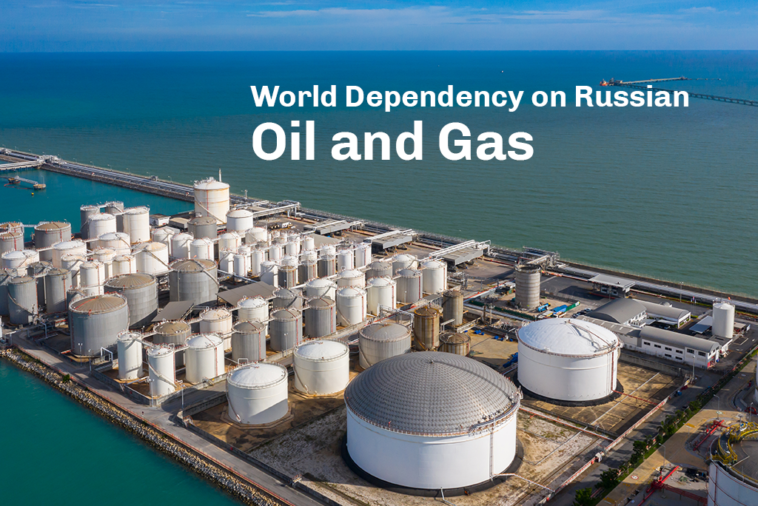Amid Russia’s invasion of Ukraine, the United States of America, the United Kingdom, and the European Union have announced to restrict Russian crude oil and gas imports. However, still, they are dependent on Russian oil and gas as Russia is the world’s second-largest exporter of crude petroleum oil and seventh-biggest supplier of petroleum gas. According to our database, Russia exported oil worth US$110.1 billion and gas worth US$8.8 billion in 2021. Here is an in-depth analysis of the Russian oil and gas export market and which countries are still buying oil and gas from Russia.
What sanctions are there on Russian oil and gas?
The United States has announced a complete ban on Russian oil, gas, and coal imports after Ukraine called for sanctions to be expanded. The United Kingdom is also likely to phase out Russian oil by the end of the year, and the EU is reducing its Russian gas imports by two-thirds. Prices of oil and gas have already increased sharply, and if Russia were to halt exports they would rise further.
Why sanctions on Russia?
The sanctions have been imposed by the UK, the U.S., the EU, and other countries to ban Russia’s invasion of Ukraine. Russia started military operations in Ukraine on 24th Feb 2022. The conflict between Russia and Ukraine began in Feb 2014 following the Ukrainian Revolution of Dignity, and initially focused on the status of Crimea and parts of the Donbas, internationally recognized as part of Ukraine.
Which countries are still buying Russian oil?
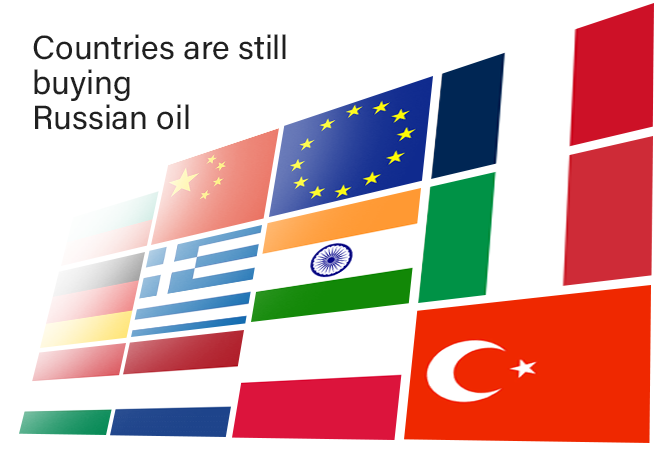
Amid sanctions imposed on Russia over its invasion of Ukraine, countries like the UK are under pressure to ban Russian oil. Europe also wants to ban imports of Russian petroleum gas. But that does not look anytime soon, as Russia is among the world’s top exporters of oil and gas and many countries are still dependent on Russian oil and gas. Here is a list of countries that are still buying Russian oil.
- Bulgaria: According to the reports, Bulgaria could use 100% non-Russian crude oil if need be, up from 40% currently.
- China: China is the world’s top importer of Russian oil, accounting for about 32% of total Russian crude oil exports in 2021. According to the reports, China is importing more crude oil from Russia.
- European Union (EU): The 27-member bloc, which relies on Russia for 27% of its crude imports and 40% of its gas imports is planning to ditch Russian fossil fuels over the long term and is expected by the end of May 2022. Despite putting sanctions on Russia, the EU will continue to import oil from Russian oil companies.
- France: France is already moving away from Russian diesel, but it is still buying Russian oil.
- Germany: Germany is the third-biggest importer of Russian crude oil, accounting for about 9% of Russian total oil exports in 2021. Germany is also majorly dependent on Russia to meet oil demand.
- Greece: According to reports, Greece’s biggest oil refiner, Hellenic Petroleum said that it can replace Russia as an oil exporter. It has already secured additional oil supplies from Saudi Arabia.
- India: India is also importing crude oil from Russia to control the rising prices.
- Italy: Italy, the seventh-biggest Russian oil imported shared 4% value to total Russian crude oil exports, is also importing oil from Russia.
- Hungary: Hungary’s Prime Minister Viktor Orban has repeatedly opposed sanctions on Russian oil and gas.
- Netherlands: Neither the Dutch government nor Rotterdam Port has banned Russian oil. Around 30% of the oil that goes through Rotterdam is Russian. Around 20 million tonnes of Russian oil products go through this port annually.
- Poland: According to the reports, PKN Orlen, Poland’s largest refiner, has said that it is importing oil from Russia for its refineries in Poland, Lithuania, and the Czech Republic. It also said that it is prepared for any scenario, including a complete suspension of the Russian oil supply.
- Turkey: Turkey is also one of the major importers of Russian crude oil. It has no plans to stop buying Russian crude and related products. It opposes sanctions on Moscow. Tupras is the largest refiner in Turkey.
How much oil does Russia export?
Russia is the world’s third-biggest producer of crude oil, accounting for over 10% of global oil production. On average, Russia produces 10.7m/barrel of oil in a day. Russia is behind the United States and Saudi Arabia. Check the list of the world’s top 10 oil-producing countries with their market share.
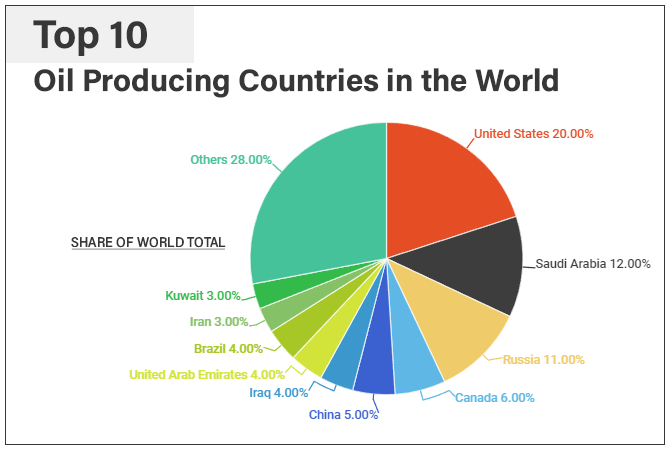
Of about 5m/barrel of crude oil production, Russia exports more than half of that to Europe. According to Russia’s trade database, Russia exported crude oil worth US$110 billion to the world in 2021, higher than that of the previous year. Below given chart shows the dollar amount of Russian crude oil exports reported from 2012 to 2021.
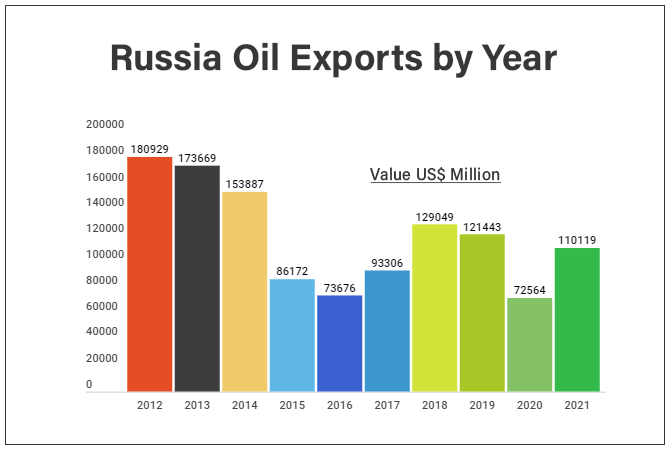
What about alternative oil supplies?
According to industry experts, it should be easier to find alternative suppliers for oil than for gas, because some come from Russia, and there are a lot of shipments arrive from elsewhere. The United States has been asking Saudi Arabia to increase oil production, but it has rebuffed previous US requests to boost output to reduce oil prices.
Saudi Arabia is the biggest oil producer in OPEC, the oil cartel which accounts for about 60% of the crude oil traded across international borders. OPEC has a key role in reducing oil prices, but no OPEC member has agreed to any request to boost output so far.
Russia is not a member of OPEC but has been working with it since 2017 to place limits on oil production, to maintain earnings for producers.
The U.S. is looking for hope that Venezuela should relax oil sanctions. It is used to be a key US oil supplier, but recently Venezuela has largely been selling its oil to China.
What would happen if Russian gas stopped flowing into Europe?
Already high prices of petroleum gas could even increase more. Russian gas accounts for about 50% of Europe’s gas imports. If this dried up, European countries would be especially vulnerable. Here is a list of Russia’s top 10 export destinations of petroleum gas with export figures recorded in 2021.
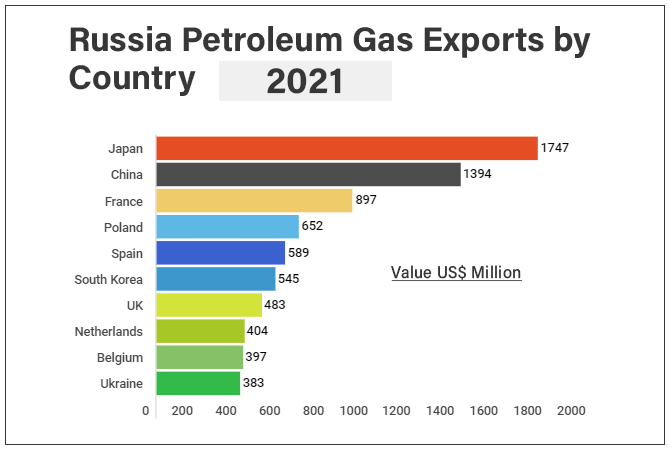
Europe could turn to exist petroleum gas exporters such as Qatar, Algeria, or Nigeria, but there are practical obstacles to quickly expanding gas production. Russia only provides about 5% of total gas exports to the United Kingdom, and the United States doesn’t import any Russian gas.
Petroleum gas price in Europe and the United Kingdom has jumped significantly after the Russian invasion of Ukraine, due to worries about supply shortages. As Russia and Ukraine talks were failed, the price of gas could rise further.
Could alternatives to Russian gas be found?
Not very easily. It’s harder to find alternatives to Russian gas because big pipes take Russian gas to Europe. According to reports, if Russia stops gas supplies to Europe, then European countries could import more gas from the United States. They could also ramp up the use of other energy sources, but all these are not easy and quick.
As a result of the Russia-Ukraine war, consumers in Europe and other countries will face rising energy and fuel bills due to higher global prices of these major commodities. It looks this war is not stopping any time soon, despite several talks between Russia and Ukraine government officials. Today, the world is facing an economic crisis due to the affected global supply chain. We have to wait and watch till when this war continues and in which direction it will go and how the world will take to experience fewer economic consequences.


